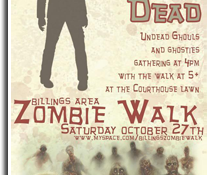Why does autobiographical writing help you discover and develop your right work? Writing stories from your life helps you understand your own life in terms of the forces that have defined and changed you over the years. The facts, people, and events of your life have formed a seamless web of meaning that help you answer the questions : Who am I? What am I trying to accomplish with my life?
I know it sounds strange but even negative life experiences help us uncover the truth of our right work. For example, I am particularly ashamed of a shoplifting episode during my teens. I got caught. However, I really enjoyed playing a different character in order to avoid incarceration.
I have a gift for story-telling. Sitting in a police station, I walked out without charges by weaving an elaborate lie a la Frank Abagnale Jr., played by Leonardo Dicaprio, in the movie Catch Me If You Can. Unlike him, the person I impersonated found me out and turned me in. I was charged and put on probation.
This was morally reprehensible, I agree, but when we are looking for clues to our right work, we should not neglect those negative experiences. Every event has a flip side. We need to strip away the moral fabric of these events because we often “sin out of our strengths.”
The examined life lets you see patterns of behavior. It lets you see lessons learned the hard way. You learn the value of failure, and the value of accomplishments. Your life is your stock in trade. Even if you think your life has been unimportant to the world, it’s important to you, and that’s what counts!
One of the Success Stories on my website features a natural promoter who has a knack for getting things started. As a college student, he jerry-rigged a payphone in his dorm to permit free long distance phone calls. It wasn’t legal, but it was enterprising.
He was always starting money-saving, or money-making ventures. But he lost interest once the crank was turning and required daily attention to details to keep things running smoothly. He was criticized his whole life for his very strength. The people around him who had a knack for managing had no talent for getting things started; but once a venture was started, they criticized him for not having their talent for managing. Those criticisms cut deeply into his self esteem until he understood the value of his talent.
The key here is to identify our natural skills and abilities. How we use those talents is another issue. We choose virtue or vice; we use our gifts in the service of good or bad. It is, of course, difficult to write about emotional events in our lives, especially painful ones. But when you are writing your autobiography, try to portray the events of your life with accurate and honest descriptions. Leave out the moral judgments.
Try it. Pick one negative event from your life, and write about it according to the following format :
1. A clear statement of the activity (in one sentence)
2. What caused you to get started in the activity?
3. Write a detailed story of what you did, how you did it, where, when, and with whom. Stick to the facts. Focus on the how not the why.
4. What parts gave you the most sense of satisfaction and fulfillment?
5. Was there some significant reason you stopped the activity?
In my book JobJoy : Finding Your Right Work through the Power of Your Personal Story, I provide a format for charting and writing your stories quickly and easily.
From your stories, I generate a JobJoy Report. This report gets to the essence of who and what you are in terms of work. Career decision-making becomes easy. It taps into the motivations of each individual.
I analyze your stories and prepare a comprehensive detailed report that will identify and define your Key Success Factors. This report answers the questions: What are the natural talents you use and consistently bring satisfaction to you when you are doing what you enjoy most and doing it well? What is the subject matter that you gravitate to without even trying? What circumstances or conditions have to exist in the job environment to bring out the best in you? How do you naturally build relationships with others?
From this analysis we can generate an Ideal Job Description and match it with specific opportunities in the real world of work.





